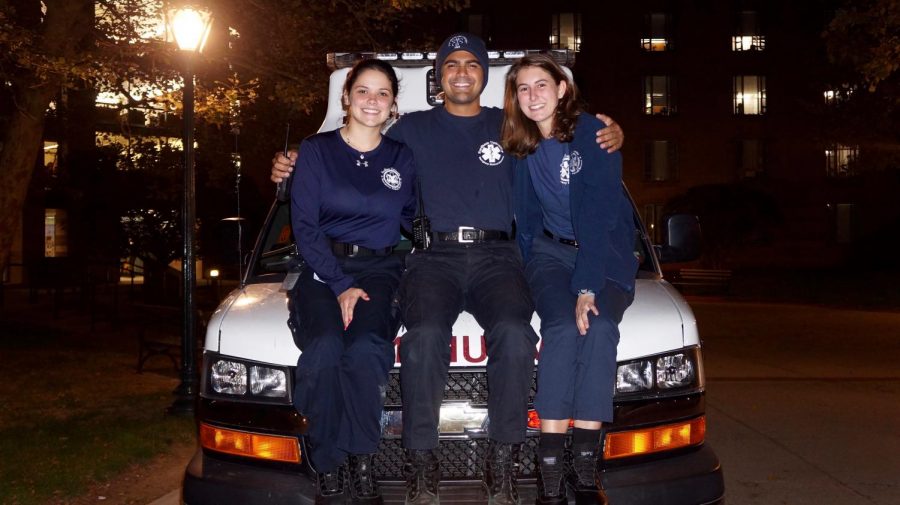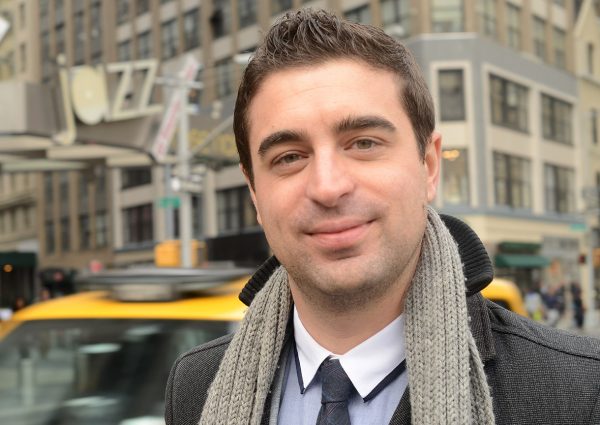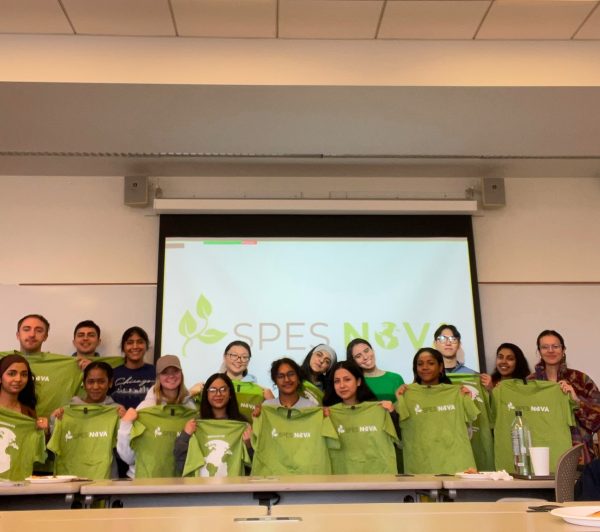FUEMS Remembers 42 Years of Service
Jennifer Hoang/The Fordham Ram
FUEMS is Fordham’s student run EMS service that has been around for 42 years.
Urban Dictionary, a crowdsourced online dictionary for slang words and phrases, defines getting “FUEMED” as “the act of getting belligerently wasted on campus at fordham university, to the point where volunteer student ambulance services need to take you to a local hospital.”
Fordham University Emergency Medical Service (FUEMS) is known around campus for treating intoxicated students, but according to Nate Signh, FCRH ’20, Director of FUEMS and Yianni Flouskakous, FCRH ’20, chief of FUEMS, the organization is much more than that.
“Intoxication calls only account for 30% of our calls,” said Singh. “We’ve seen so many different medical emergencies and had members respond in emergencies like 9/11.”
Born out of a need for faster EMS treatment in and around the Fordham campus, FUEMS originated under Bruce Nedelka, CBA ’79, in 1977 and operated under the name Student Emergency Response Group (SERG). Nedelka’s intention was to provide medical aid to students in the hopes of shaving time off of the 45-minute average ambulance response time in the Bronx.
Forty-two years later, the organization that provides 24/7 EMS coverage on and around the university’s campus, is able to respond to any medical emergency in about five minutes, has 150 members and was recognized as the top collegiate EMS agency in the nation in 2018.
Flouskakous, who became a certified EMT his freshman year, has worn many hats during his tenure at FUEMS. Though he and Singh are both senior males on the pre-med track, he relayed that FUEMS is approximately 75% female and diverse in ethnic backgrounds and majors.
He said the organization has trained its members to handle any medical emergency and responds to calls from the university, Fordham Prep and places off campus in close proximity to the university.
“I’ve seen anaphylaxis, strokes, heart attacks, seizures, suicidal ideation and other major injuries and illnesses,” he said. “It’s our job to supply the resources for any situation as best we can.”
According to Singh, FUEMS is dispatched by the university’s Public Safety, not 911, but has functioned just as any other EMS service in New York since 1988 when it became an official agency under the NYC Department of Health.
The organization is also part of the Mutual Aid Response System (MARS) which was originally founded to provide professional emergency services to the San Francisco Bay Area community in 2000.
Under MARS, FUEMS can be dispatched to any major event or emergency in New York City. Before the invention of MARS, student EMTs responded to the 1993 bombing at the World Trade Center and have been on standby for several large scale events including the NYC 5 Borough Bike Tour, and the NYC Marathon, according to John Genua, FCRH ’02.
Genua, a then-senior at the time and his FUEMS colleague, Salvador Collazo, FCRH ’01, contacted NYC’s MARS radio system, listed their ambulance as available and drove down toward the epicenter of destruction on the morning of Sept. 11, 2001.
He said he received the call on his room phone in Walsh Hall while getting ready for a 10 a.m. class that morning. He and Collazo were instructed to report to staging at Battery Park.
“I remember having a very clear view of the skyline and both towers in flames,” said Genua. “I had a pair of binoculars that got me a very clear image of what was happening. We had a stack of respirator masks in the ambulance, as we had packed extras, and I remember stopping several times to hand them to police officers who were choking and gasping on the dust.”
Genua described the events of the day and was present when the second tower collapsed. He said he and Collazo transported at least five people, including an individual suffering from an asthma attack.
“Fortunately FUEMS and other agencies in NYC had just become certified to administer Albuterol, which prior to 1999 was a medication only administered in the field by advanced certified paramedics,” he said.
According to Genua, he and Collazo remained at the scene until early evening, returned to Chelsea Piers the next day to continue to standby and sent an additional FUEMS ambulance on Thursday, the 13th.
“All of us wanted to assist further, but the fact remained that we were students and we needed to resume focus on our academics,” he said.
According to Flouskakous, his main objective in intense situations is to keep focus and provide as much medical support as he possibly can en route to the hospital.
“In terms of our training, for us, because we’re not 911 and we’re not responding to a huge demographic, we make sure that we have the proper practice because at some point, you are nervous, but we try our best not to show that to our patients because we want them to stay calm,” he said.
In 2017, FUEMS also began partnering with Mark Estrellado, M.D., FCRH ’09, an ER attending at St. Barnabas Hospital in the Bronx, where the majority of FUEMS’ transports go. As the EMS director at St. Barnabas, Estrellado is aiding FUEMS in revamping its training protocols and is informed on every emergency call FUEMS receives. Estrellado receives text summaries describing the cases and is available to FUEMS’ members at all hours.
“We’re involving a lot more simulation training because evidence has shown that it’s more important to be able to actually have a chance to apply these concepts in more practical, clinical scenarios,” said Estrellado.
This training comes amid the recent spike in acute medical emergencies at the university such as cardiac arrest and stroke, according to Estrellado.
“It’s important to have a student body who understands where these students are coming from and have that unique perspective of students who have that medical know-how,” he said.
Flouskakous predicts the organization will see an average of three to four calls on Friday and Saturday nights where there was once six, demonstrating a noticeable decrease in intoxication calls over the past couple of years.
He and Singh have clocked in close to 2,000 hours each at FUEMS, excluding trainings, phone calls and clerical work, and are currently working toward the process of getting FUEMS’ required EMT school to count toward university credit, though they both vouched for the labor of love that has been their time as EMTs.
According to Singh, FUEMS is a stepping stone that has given him skills he can use in any life situation.
“All the patient care and patient interaction has been very much an inspiration for me and there’s such a plethora of skills that are involved,” said Singh.
Genua echoed the same sentiment. While he currently works with a metals import/distribution firm in New York, he said his experiences on FUEMS have transferred into every aspect of his professional career, and he has occasionally been called upon to assist in medical emergencies since working as an EMT.
“Much of the training and knowledge is instinctual and remains second nature,” said. Genua “Above all though, I reflect on my time with FUEMS and EMS in general as an expression of men and women for others.”











































































































































































































